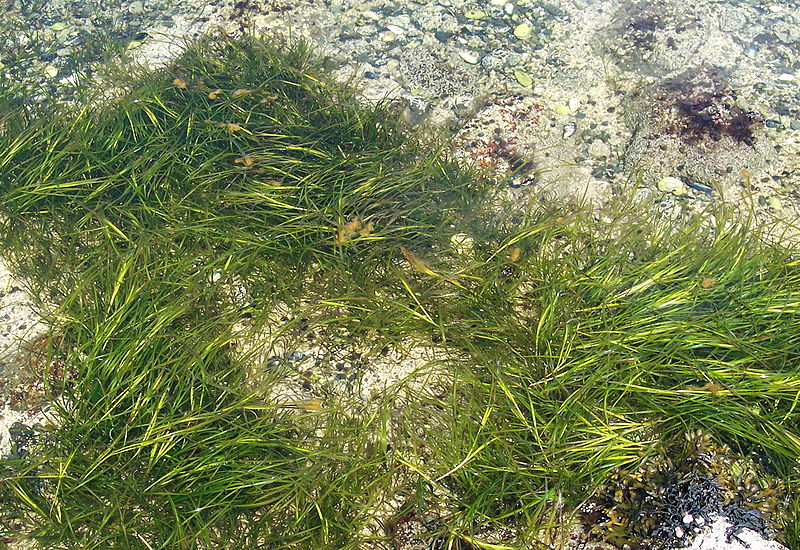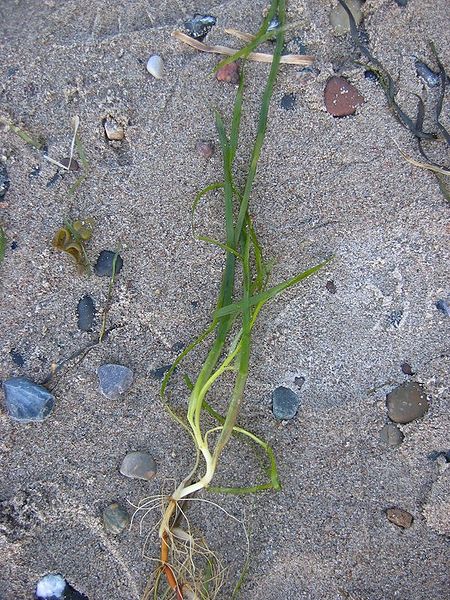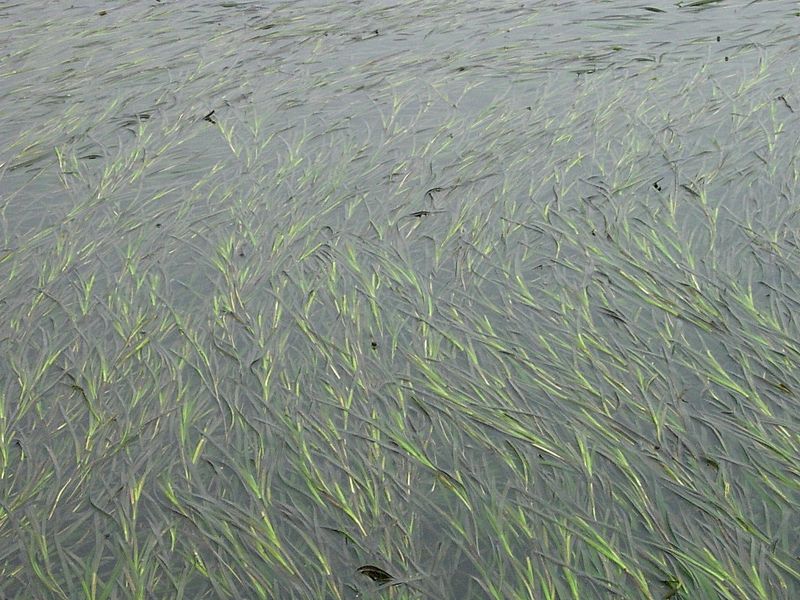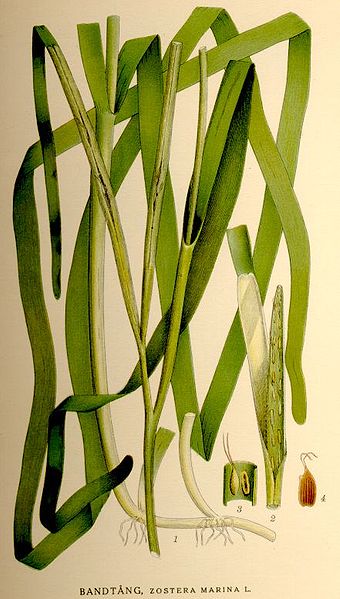❀ Common names: eelgrass, tapegrass, seawrack
❀ Aphia ID#: 495077

Introduction to Zostera marina
What is Zostera marina?
A species of flowering plant, aka an angiosperm. It is one of the most widely distributed seagrass species and can be either annual or perennial depending on its location (Blok et al. 2018). You can find Zostera marina along both coasts of North America, on the East coast their populations extend from North Carolina, USA to Labrador, Canada. They reproduce both sexually via pollen and asexually via multiple shoots coming from the same rhizome (Murphy et al. 2011).
How to identify it/ species description
The part of eelgrass that you can see is a green leaf that has a ribbon appearance with rounded tip. These leaves can grow up 1.2 meters long and 2 to 12 mm wide and can be found in a variety of depths. Leave length varies depending on water quality. Beneath the ground eelgrass has a brown rhizome (stem) that has many roots and nodes (Murphy et al. 2011). Many epiphytes can be found growing on eelgrass (Williams et al. 1993).
Role in the ecosystem
Beds of Zostera marina serve as important feeding and nursery grounds for fish and invertebrates (Adams 1976; Orth and Heck 1980). Zostera marina beds effect hydrodynamics by reducing current speeds and sheltering other species from waves. This creates an environment with low energy that allows for increased deposition of suspended particles that will change the benthic community’s structure. Many organisms, both adults and juveniles, take shelter in eelgrass beds where they are protected from outside stressors and predation (Gambi et al. 1990). Eelgrass beds are also a good place for marine organisms to find food, especially detrital material that can be found in large quantities within these beds (Adams 1976; Gambi et al. 1990). Zostera marina is able to fix a large amount of carbon that then becomes an energy source in the detrital food chain (Jacobs 1979).
Distribution Map
More Images
1st image: Kristian Peters — Fabelfroh 09:28, 16 September 2006 (UTC) [CC BY-SA 3.0 (http://creativecommons.org/licenses/by-sa/3.0/)]
2nd image: Ruppia2000 [CC BY-SA 3.0 (https://creativecommons.org/licenses/by-sa/3.0)]
3rd image: Carl Axel Magnus Lindman [Public domain]



